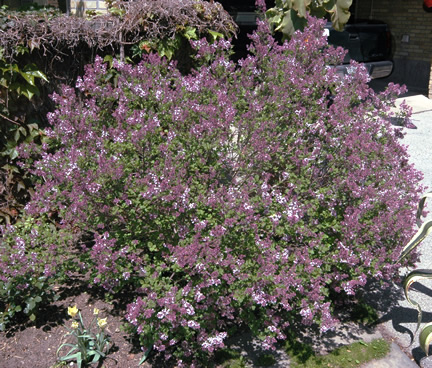| ID Characteristic | Meyer Lilac has several unique traits as compared to all other Lilacs: a spreading growth habit coupled with a densely twiggy density yields an overall medium-fine texture, small checkered Winter floral buds, rhombic to orbicular small foliage with nearly palmate venation, and 10 cm long profuse inflorescences that are spread relatively evenly over the entire shrub canopy. |
| Shape | Horizontal oval. |
| Propagation | Propagated primarily by rooted stem cuttings, but also by seeds. |
| Cultivation | Full sun to partial shade. Performs best in full sun in moist, well-drained soils, but is urban tolerant and adaptable to poor soils, dry soils, compacted soils, soils of various pH, and especially to heat and drought. |
| Leaf Description | Medium to dark green foliage, opposite, orbicular to rhombic in shape, entire but slightly wavy-margined, about 2.5 cm long, with venation that is nearly palmate. Leaves are glabrous, entire, dull-shiny, and have a chartreuse to golden-brown autumn colour. |
| Flower Description | Lavender-white to violet-purple, fragrant, in late May, as 10 cm long fragrant inflorescences that completely cover the shrub. |
| Fruit Description | Brown capsules on the Winter-persistent fruiting stalks are not ornamental. |
